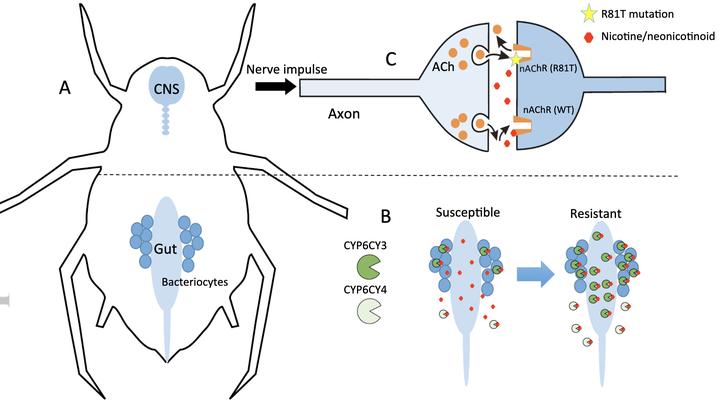Molecular innovations underlying resistance to nicotine and neonicotinoids in the aphid Myzus persicae
 Image credit: Unsplash
Image credit: UnsplashAbstract
The green peach aphid, Myzus persicae, is a globally distributed highly damaging crop pest. This species has demonstrated an exceptional ability to evolve resistance to both synthetic insecticides used for control, and natural insecticides produced by certain plants as a chemical defence against insect attack. Here we review work characterising the evolution of resistance in M. persicae to the natural insecticide nicotine and the structurally related class of synthetic neonicotinoid insecticides. We outline how research on this topic has provided insights into long-standing questions of both evolutionary and applied importance. These include questions pertaining to the origins of novel traits, the number and nature of mutational events or “adaptive steps” underlying the evolution of new phenotypes, and whether host plant adaptations can be co-opted to confer resistance to synthetic insecticides. Finally, research on the molecular mechanisms underlying insecticide resistance in M. persicae has generated several outstanding questions on the genetic architecture of resistance to both natural and synthetic xenobiotics, and we conclude by identifying key knowledge gaps for future research.